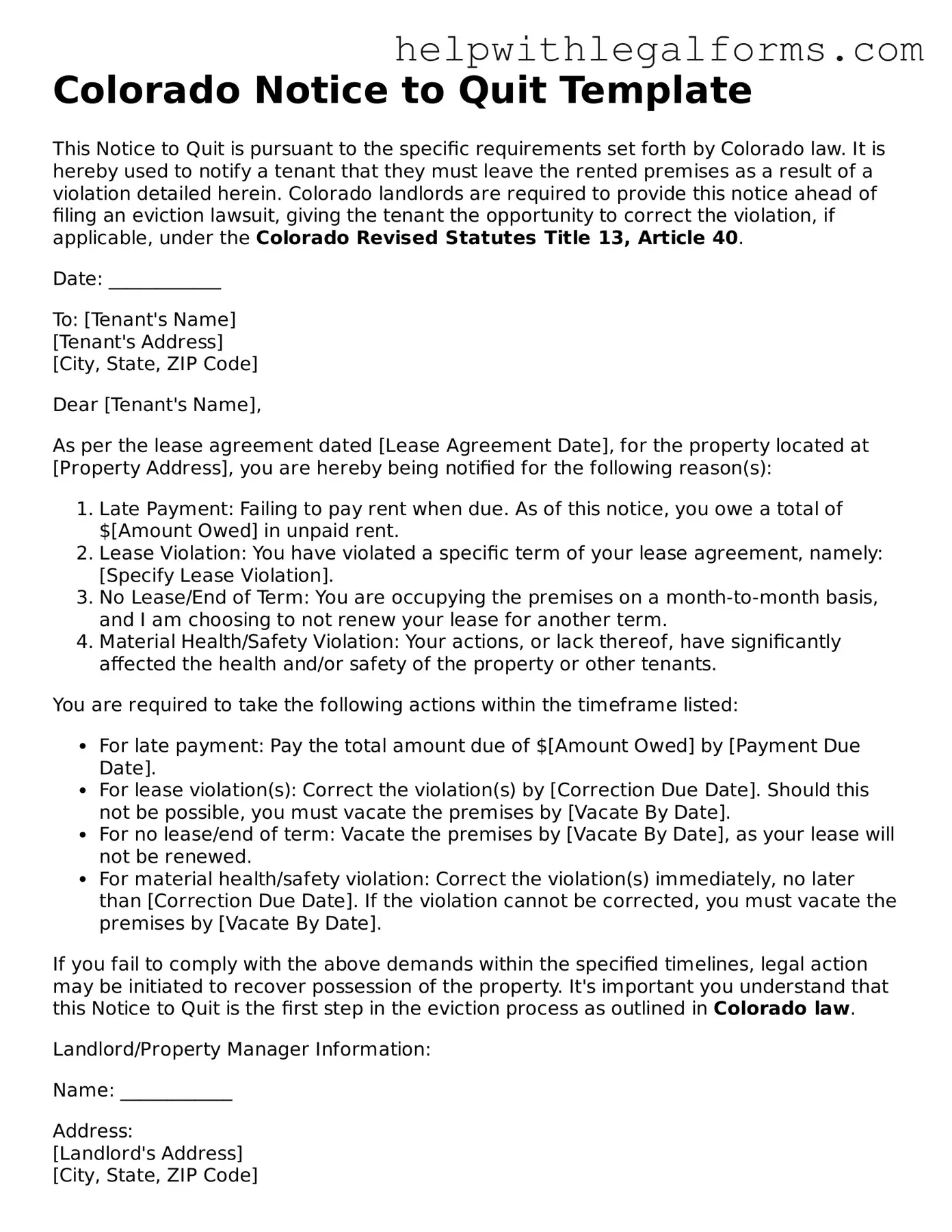Colorado Notice to Quit Template
This Notice to Quit is pursuant to the specific requirements set forth by Colorado law. It is hereby used to notify a tenant that they must leave the rented premises as a result of a violation detailed herein. Colorado landlords are required to provide this notice ahead of filing an eviction lawsuit, giving the tenant the opportunity to correct the violation, if applicable, under the Colorado Revised Statutes Title 13, Article 40.
Date: ____________
To: [Tenant's Name]
[Tenant's Address]
[City, State, ZIP Code]
Dear [Tenant's Name],
As per the lease agreement dated [Lease Agreement Date], for the property located at [Property Address], you are hereby being notified for the following reason(s):
- Late Payment: Failing to pay rent when due. As of this notice, you owe a total of $[Amount Owed] in unpaid rent.
- Lease Violation: You have violated a specific term of your lease agreement, namely: [Specify Lease Violation].
- No Lease/End of Term: You are occupying the premises on a month-to-month basis, and I am choosing to not renew your lease for another term.
- Material Health/Safety Violation: Your actions, or lack thereof, have significantly affected the health and/or safety of the property or other tenants.
You are required to take the following actions within the timeframe listed:
- For late payment: Pay the total amount due of $[Amount Owed] by [Payment Due Date].
- For lease violation(s): Correct the violation(s) by [Correction Due Date]. Should this not be possible, you must vacate the premises by [Vacate By Date].
- For no lease/end of term: Vacate the premises by [Vacate By Date], as your lease will not be renewed.
- For material health/safety violation: Correct the violation(s) immediately, no later than [Correction Due Date]. If the violation cannot be corrected, you must vacate the premises by [Vacate By Date].
If you fail to comply with the above demands within the specified timelines, legal action may be initiated to recover possession of the property. It's important you understand that this Notice to Quit is the first step in the eviction process as outlined in Colorado law.
Landlord/Property Manager Information:
Name: ____________
Address:
[Landlord's Address]
[City, State, ZIP Code]
Contact Phone: ____________
Email: ____________
This notice is being provided to you on [Date Notice Served], via [Method of Delivery], in compliance with Colorado state requirements for such notices.
If you have questions or require clarification regarding this notice, please contact me using the information provided above.
Sincerely,
[Landlord's/Property Manager's Name]
